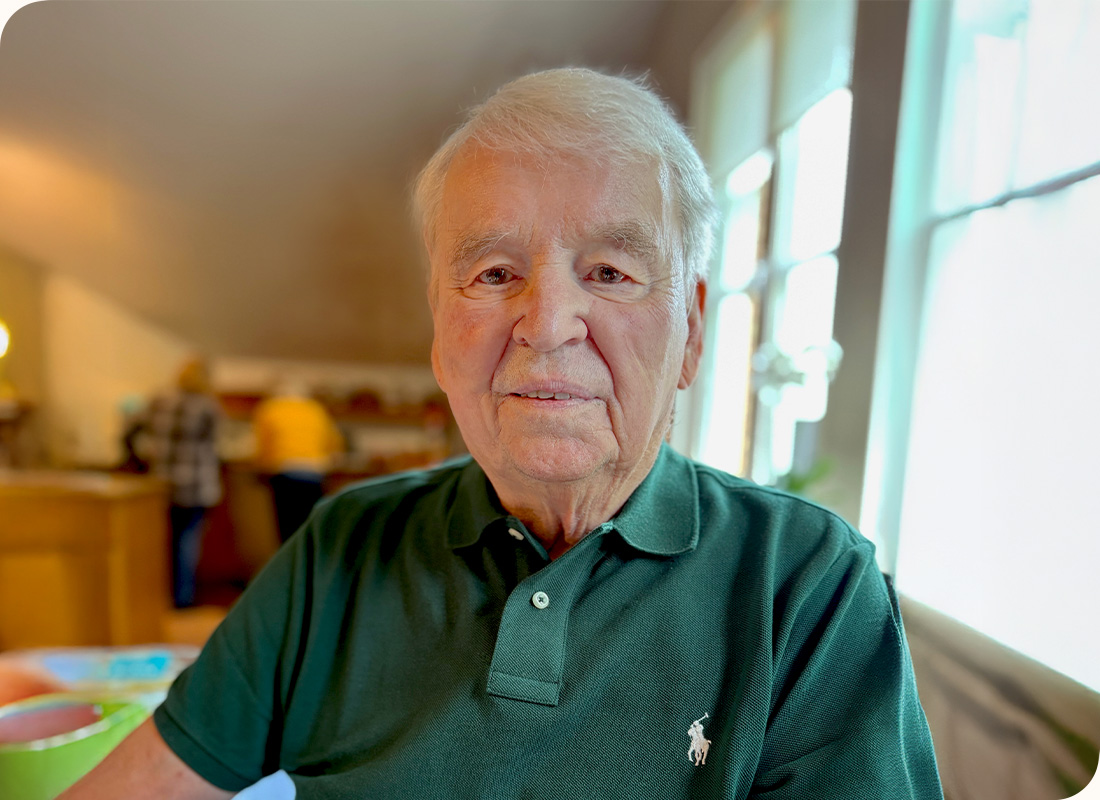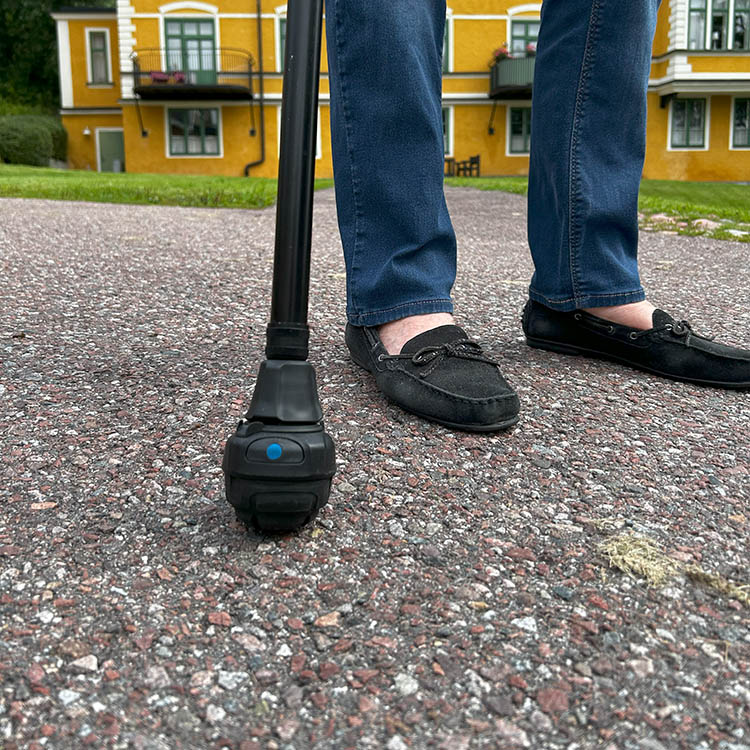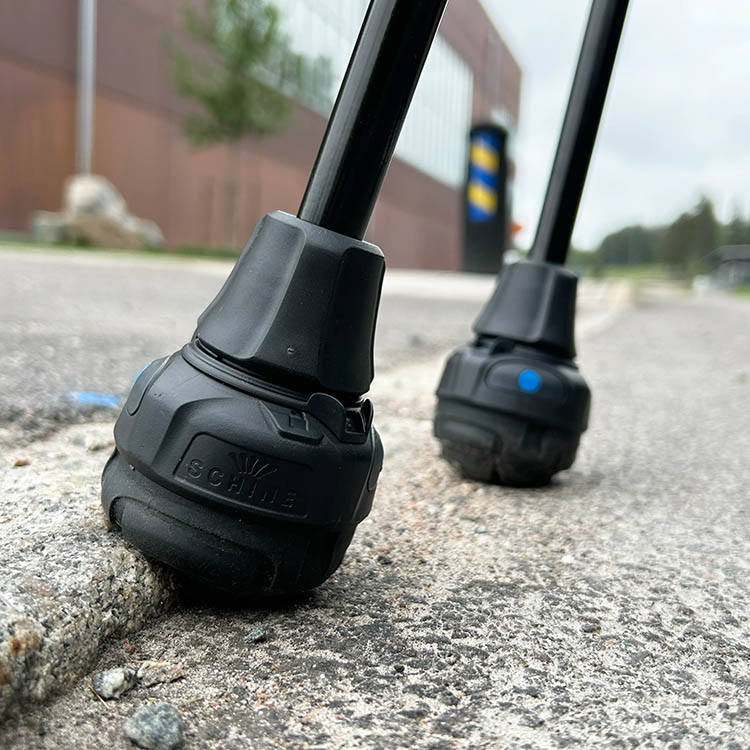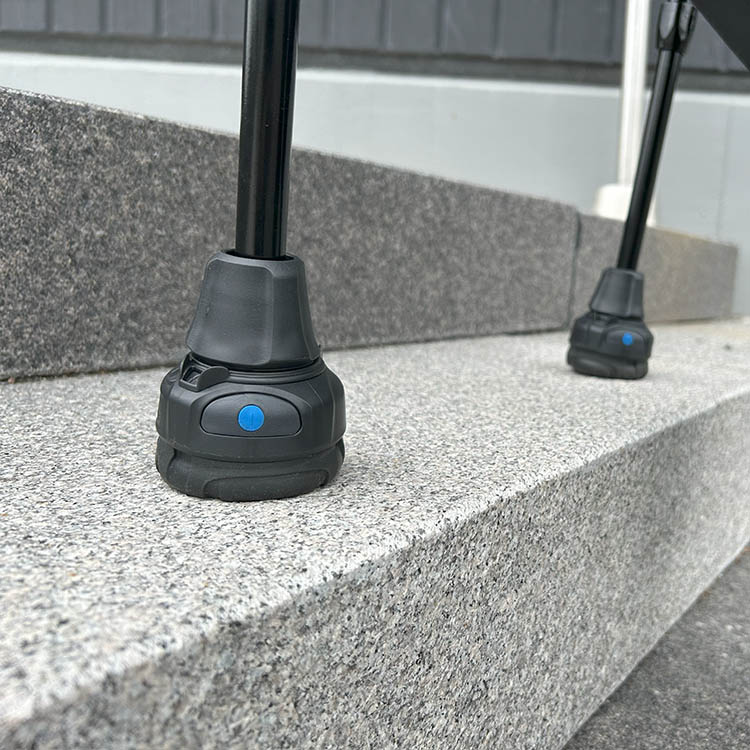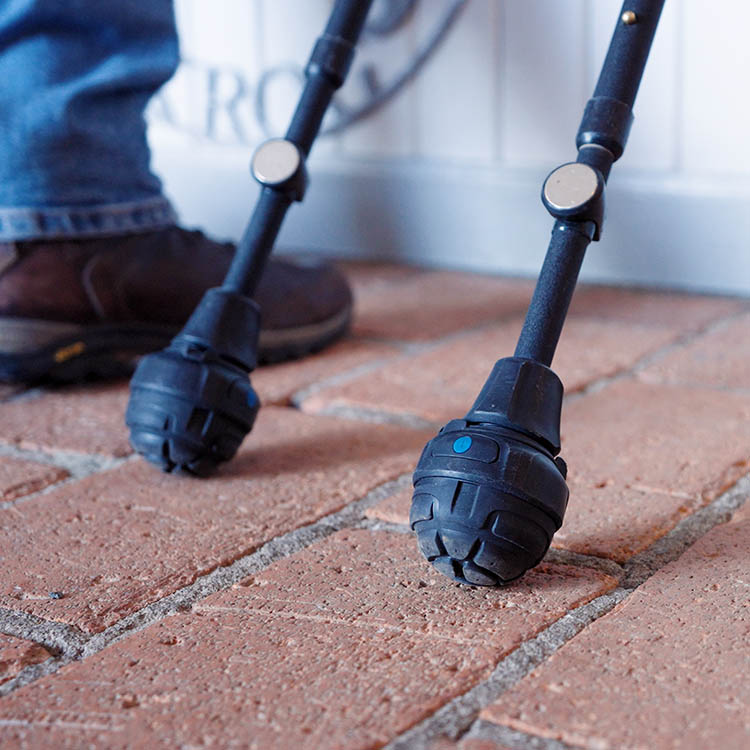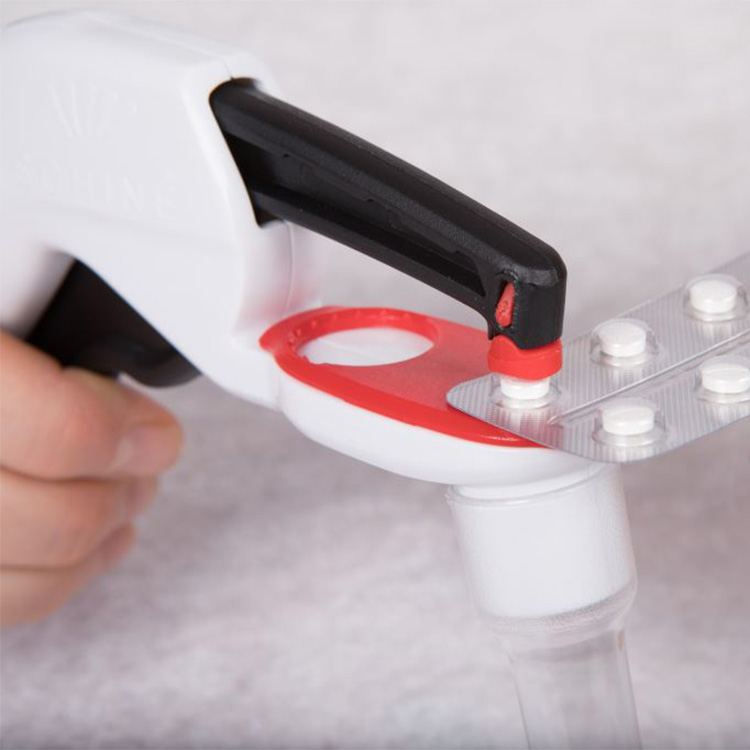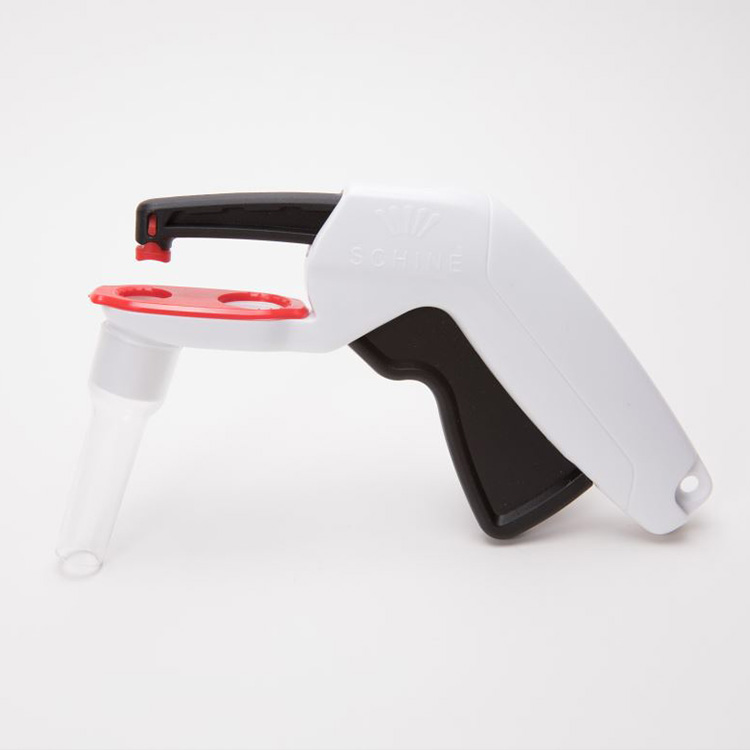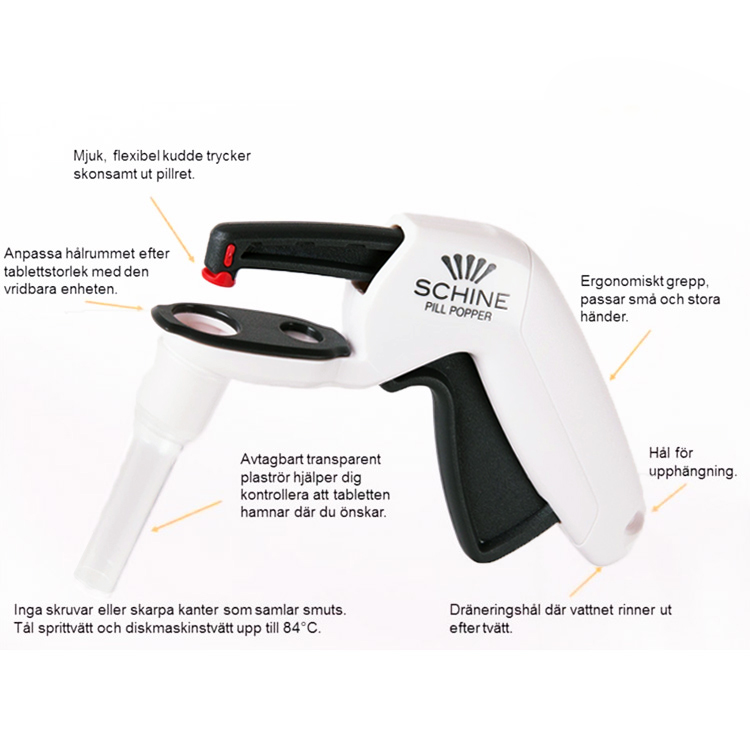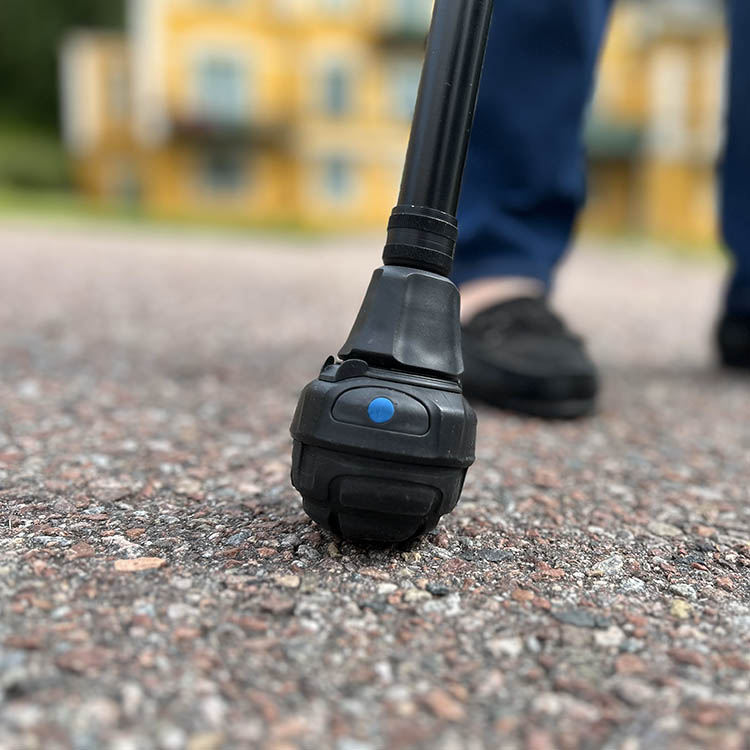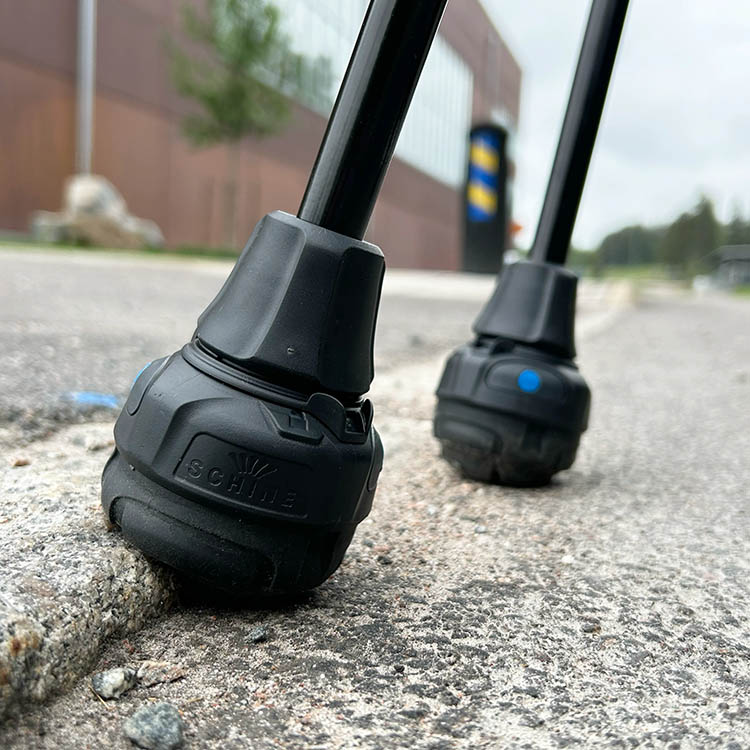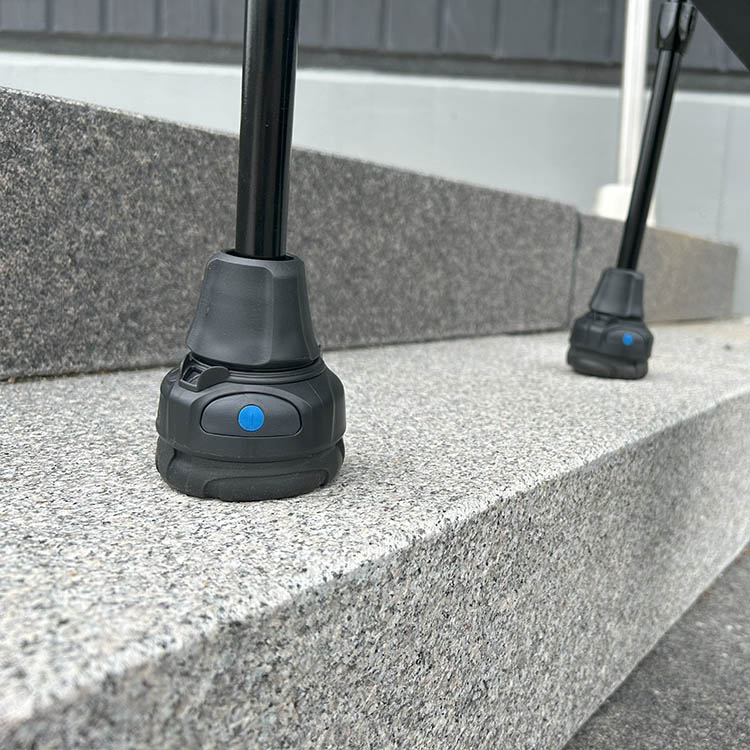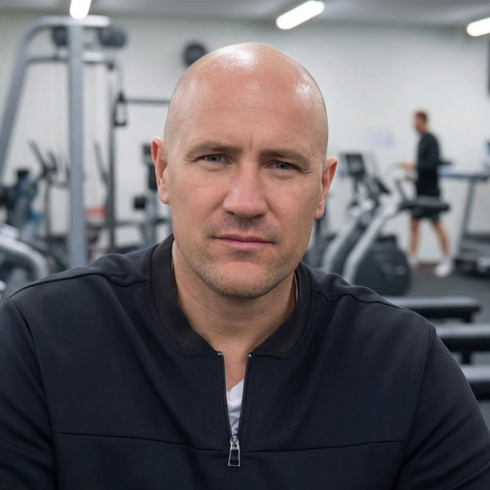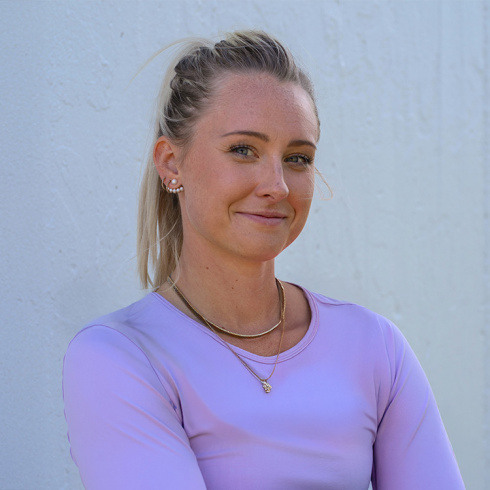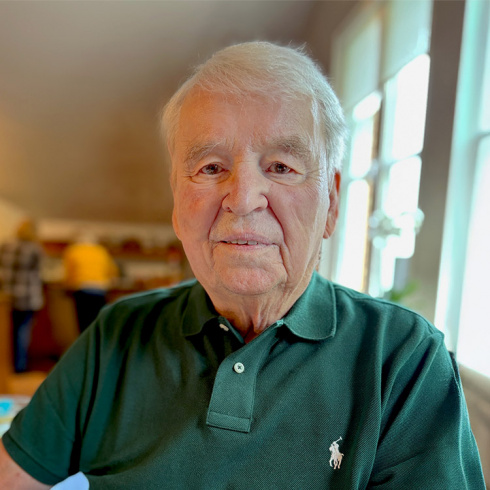An idea with Foothold
Innovator: Sture Milling
Innovation: Shock absorber for crutch
Saying that Sture Milling has his hands full would hardly do him justice. At 89 years old, he has spent over half a century running businesses, traveling the world for work, and building factories with impressive turnovers. But a technician? No, that’s not how he describes himself. Instead, he’s a wellspring of ideas, driven by determination and a relentless desire to solve problems. His latest project is both personal and visionary: a brand-new accessory for crutches designed to improve grip, enhance shock absorption, and, above all, provide a more comfortable experience for those who rely on crutches every day.
From Experience to Innovation
The idea didn’t stem from theoretical calculations, but from a reality that demanded a solution. Sture was diagnosed with cancer at the age of 40, and at 53, he had his left leg amputated after undergoing radiation treatment for a metastasis. Since then, he has lived with chronic pain and mobility challenges. Crutches have been a constant in his life ever since, along with the frustration over their often inadequate design. This frustration sparked a journey filled with designs, discussions, and attempts to turn a need into a functional solution, eventually leading to the creation of a completely new type of crutch shock absorber.
The first attempt was a futuristic design, a “Blade Runner”-inspired prototype that quickly revealed its shortcomings. But for Sture, this was just the beginning. Together with a designer, an orthopedic surgeon, and several individuals who rely on crutches, they brainstormed and refined various ideas to find the best approach. They tested everything from stress balls and 3D-printed parts to air valves. The prototypes were too hard, too soft, or failed due to unforeseen factors. To provide the right support and comfort, they needed a core with varying degrees of hardness, along with materials that offered a secure grip on everything from slippery floors to uneven outdoor surfaces. There were many setbacks, but also progress. And slowly but surely, a new type of crutch damper began to take shape—one that not only provides support but also moves with the body, improves grip, and reduces strain on the shoulders and wrists.
Patience, Persistence, and Progress
Developing a medical product is no quick feat. It requires capital, testing, regulations, certifications, and often several years of development. And in this particular industry, being a small family business doesn’t make it any easier.
“The requirements are the same whether you’re AstraZeneca or Milmas AB. CE marking, risk analyses, validations—everything has to be in place before a product can even reach the market.”
But when it comes to Sture, patience is in no short supply. Behind every prototype, test, and decision, there’s been a tight-knit team with diverse expertise—from design and orthopedics to production and user testing. The tools were ordered back in 2021, and the first test series was delivered in the summer of 2023. After further adjustments and testing, the official launch took place in 2024. It’s been a long journey, but one that has resulted in a robust, tested, and patented product.
Towards New Markets
Thinking big has always been part of the plan. While launching a new product in a market that demands clinical evidence, is highly competitive, and where credibility must be earned is no small feat, but Sture and his team have refused to be deterred. Quite the opposite. In their pursuit of the right path forward, they’ve expanded their focus beyond Sweden. With support from Business Sweden, they gained valuable insights through market analysis, and the Netherlands became the first international test market. There, the crutch shock absorber is now being used in a clinic for patients with back injuries—an important validation of the product’s real-world functionality.
“One of the biggest challenges is keeping the price reasonable, even though everyone in the retail chain wants their share. That’s why finding the right partner was so crucial—someone who not only sells the product but also understands the value of smart solutions that truly improve people’s everyday lives.”
The collaboration with SmartaSaker began back in 2016, when the Pill-Popper was added to their product range. With the same focus on practical, everyday solutions, the new crutch shock absorber was a natural addition.
A Family Business with Stubbornness in Its Genes
Sture describes himself as stubborn. And perhaps that’s exactly what’s kept him inventing, developing, and improving well past retirement age. His daughter Ulrika, who has been involved in the project from the start, often says it’s in their genes. And when it comes to stubbornness, patience, and a drive for improvement, Sture stands firm—just like the rounded crutch base he has developed.
Tips for Other Innovators
Solve a real problem. An invention that doesn’t address a real need will be hard to sell, no matter how clever it is.Expect it to take longer and cost more than planned. Development often exceeds expectations— and even once the product is finished, there’s still plenty of work to be done to reach customers.
Work as a team. Success relies on diverse perspectives. Getting help from people with the right knowledge and experience makes the work easier and the results better.
From Experience to Innovation
The idea didn’t stem from theoretical calculations, but from a reality that demanded a solution. Sture was diagnosed with cancer at the age of 40, and at 53, he had his left leg amputated after undergoing radiation treatment for a metastasis. Since then, he has lived with chronic pain and mobility challenges. Crutches have been a constant in his life ever since, along with the frustration over their often inadequate design. This frustration sparked a journey filled with designs, discussions, and attempts to turn a need into a functional solution, eventually leading to the creation of a completely new type of crutch shock absorber.
The first attempt was a futuristic design, a “Blade Runner”-inspired prototype that quickly revealed its shortcomings. But for Sture, this was just the beginning. Together with a designer, an orthopedic surgeon, and several individuals who rely on crutches, they brainstormed and refined various ideas to find the best approach. They tested everything from stress balls and 3D-printed parts to air valves. The prototypes were too hard, too soft, or failed due to unforeseen factors. To provide the right support and comfort, they needed a core with varying degrees of hardness, along with materials that offered a secure grip on everything from slippery floors to uneven outdoor surfaces. There were many setbacks, but also progress. And slowly but surely, a new type of crutch damper began to take shape—one that not only provides support but also moves with the body, improves grip, and reduces strain on the shoulders and wrists.
Patience, Persistence, and Progress
Developing a medical product is no quick feat. It requires capital, testing, regulations, certifications, and often several years of development. And in this particular industry, being a small family business doesn’t make it any easier.
“The requirements are the same whether you’re AstraZeneca or Milmas AB. CE marking, risk analyses, validations—everything has to be in place before a product can even reach the market.”
But when it comes to Sture, patience is in no short supply. Behind every prototype, test, and decision, there’s been a tight-knit team with diverse expertise—from design and orthopedics to production and user testing. The tools were ordered back in 2021, and the first test series was delivered in the summer of 2023. After further adjustments and testing, the official launch took place in 2024. It’s been a long journey, but one that has resulted in a robust, tested, and patented product.
Towards New Markets
Thinking big has always been part of the plan. While launching a new product in a market that demands clinical evidence, is highly competitive, and where credibility must be earned is no small feat, but Sture and his team have refused to be deterred. Quite the opposite. In their pursuit of the right path forward, they’ve expanded their focus beyond Sweden. With support from Business Sweden, they gained valuable insights through market analysis, and the Netherlands became the first international test market. There, the crutch shock absorber is now being used in a clinic for patients with back injuries—an important validation of the product’s real-world functionality.
“One of the biggest challenges is keeping the price reasonable, even though everyone in the retail chain wants their share. That’s why finding the right partner was so crucial—someone who not only sells the product but also understands the value of smart solutions that truly improve people’s everyday lives.”
The collaboration with SmartaSaker began back in 2016, when the Pill-Popper was added to their product range. With the same focus on practical, everyday solutions, the new crutch shock absorber was a natural addition.
A Family Business with Stubbornness in Its Genes
Sture describes himself as stubborn. And perhaps that’s exactly what’s kept him inventing, developing, and improving well past retirement age. His daughter Ulrika, who has been involved in the project from the start, often says it’s in their genes. And when it comes to stubbornness, patience, and a drive for improvement, Sture stands firm—just like the rounded crutch base he has developed.
Tips for Other Innovators
Solve a real problem. An invention that doesn’t address a real need will be hard to sell, no matter how clever it is.Expect it to take longer and cost more than planned. Development often exceeds expectations— and even once the product is finished, there’s still plenty of work to be done to reach customers.
Work as a team. Success relies on diverse perspectives. Getting help from people with the right knowledge and experience makes the work easier and the results better.
